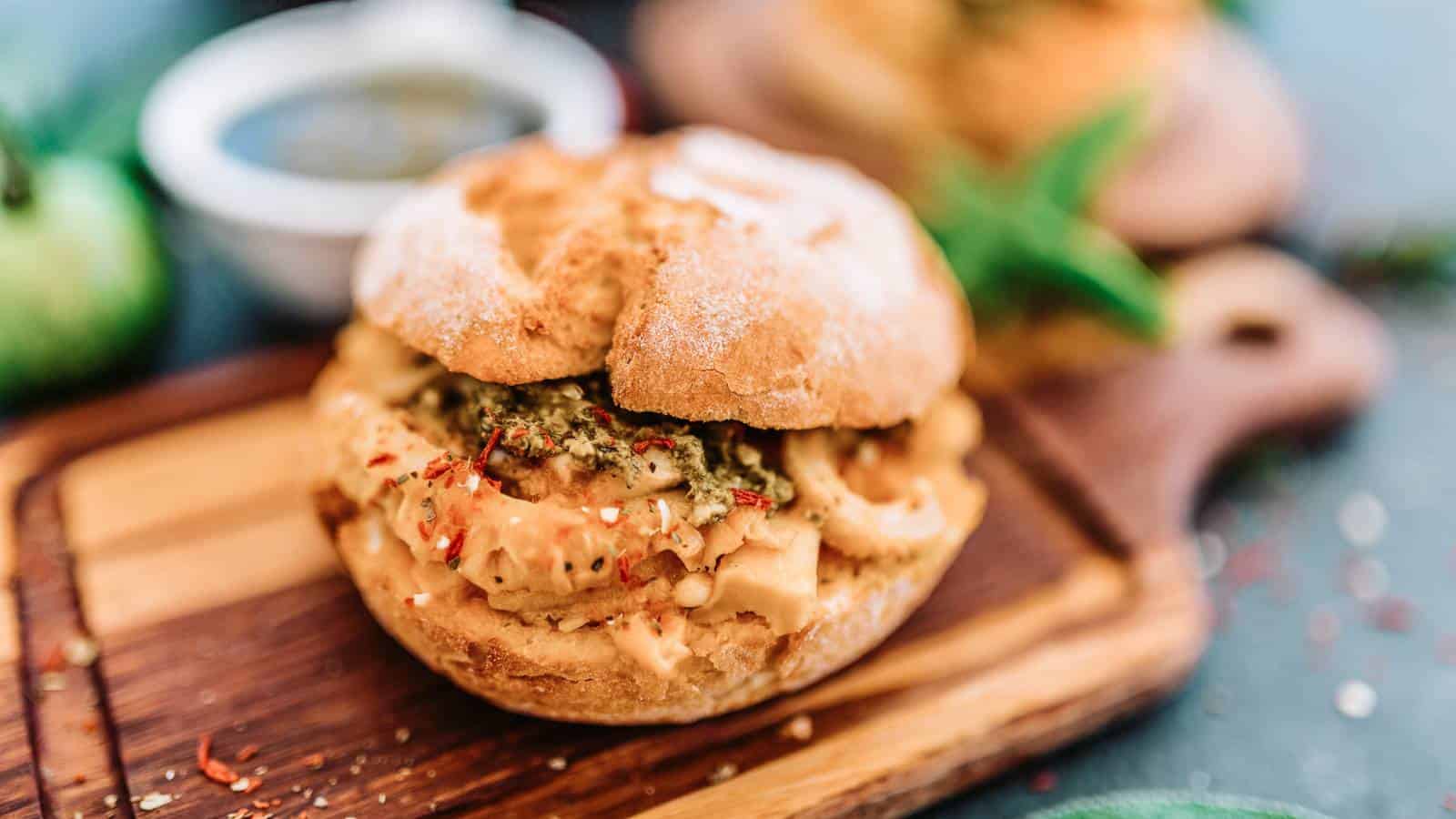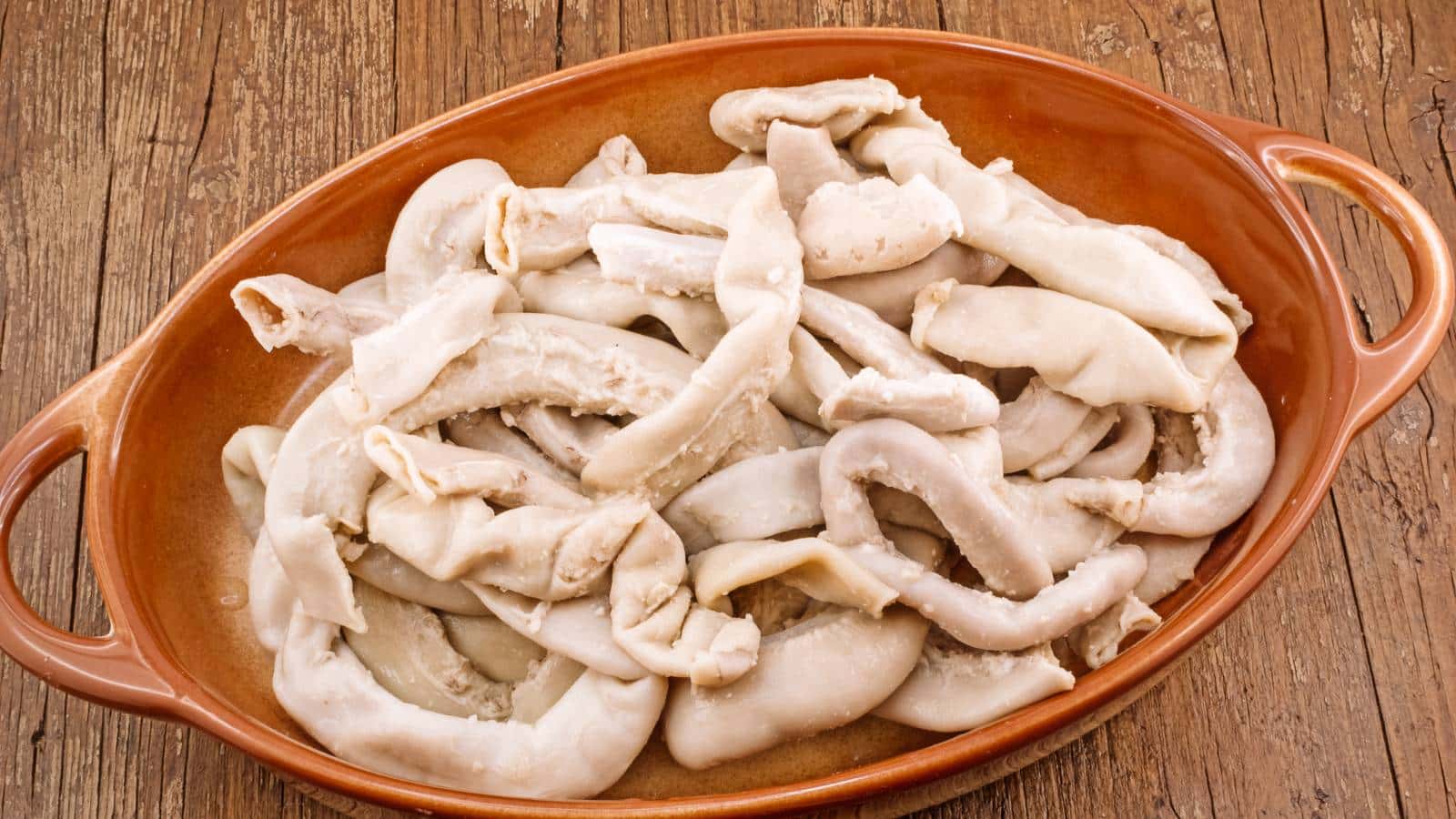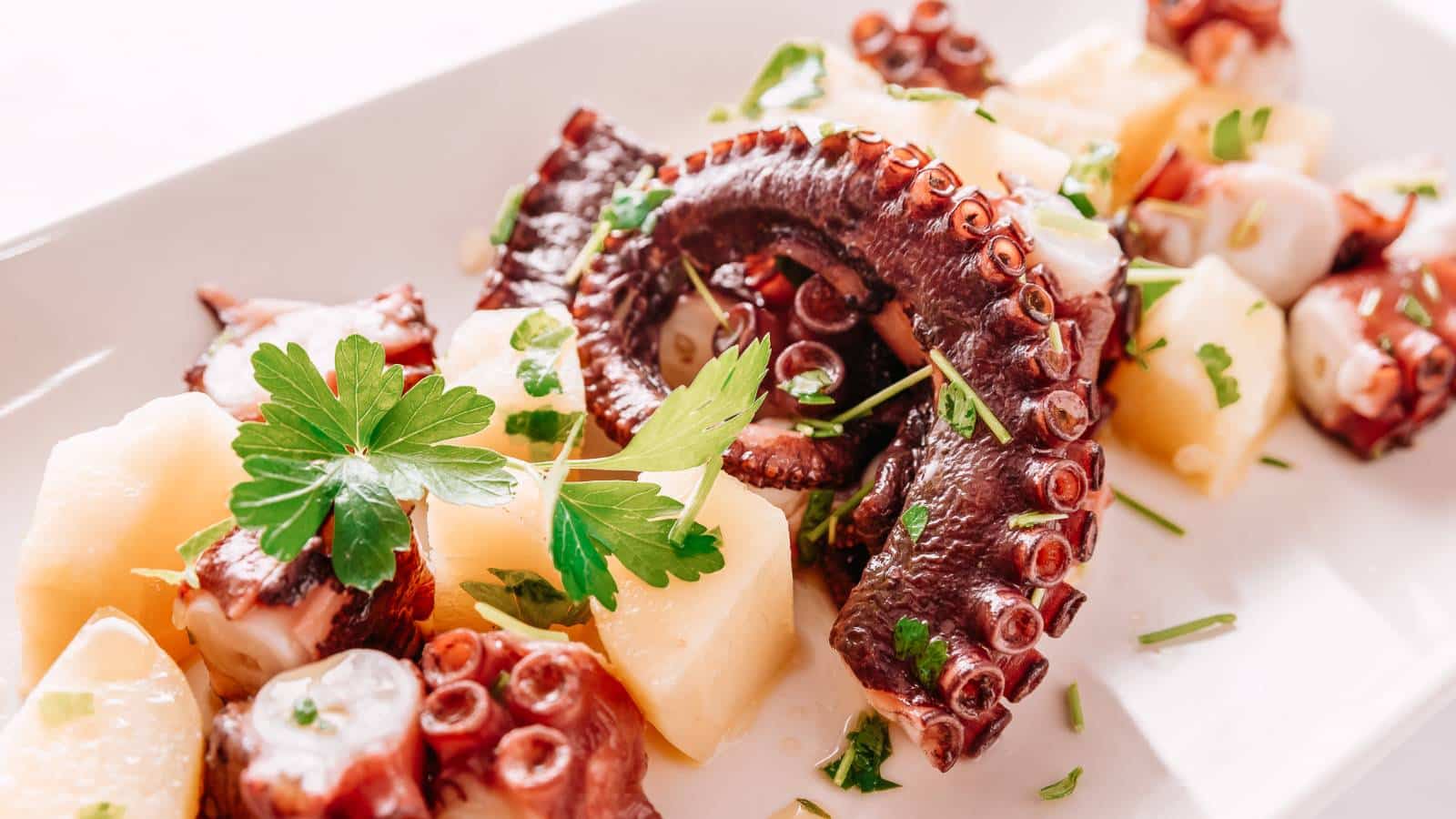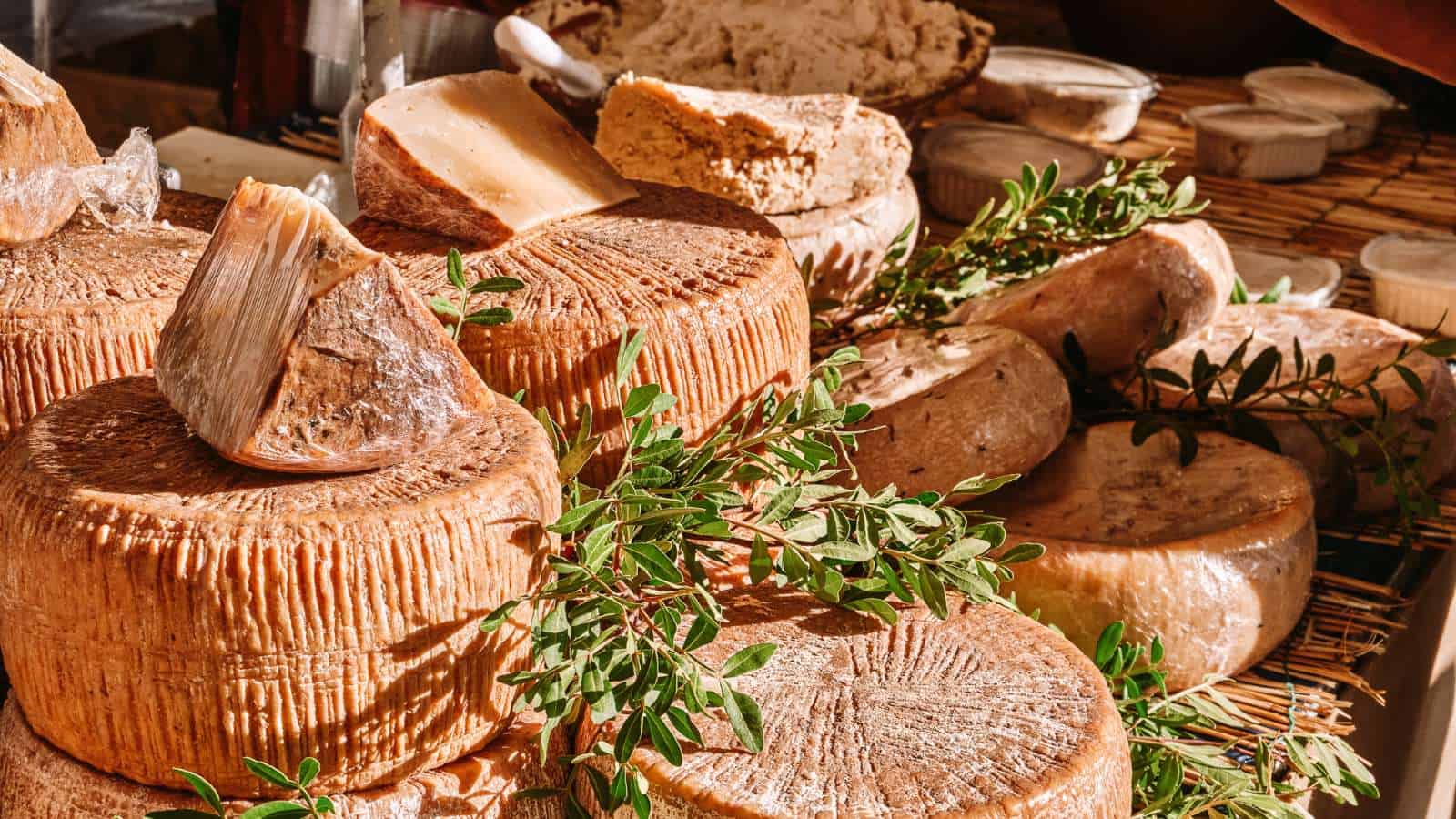12 Weird Foods To Try in Italy If You’re Feeling Adventurous
All recommendations on World Wild Schooling are independently selected by our editors. We may earn an affiliate commission from purchases made through our links.
Italian cuisine ranks highly as one of the world’s most popular cuisines every year and with good reason. Renowned for its impressive flavors and authenticity, Italian cuisine is a delight. From pizzas and pasta to strong cheeses and sweet desserts, there are so many beautiful foods to try.
However, if you dive deeper into the backstreets of Italian cuisine, you’ll find some of the world’s strangest, bizarre, and frankly scary foods. From maggot-infested cheese to guts and intestines, you’ll discover the food you’d expect to find at Jack the Ripper’s dinner table. To learn more, here are 12 weird foods in Italy that only the bravest travelers dare try.
Swipe and Vote: See What Travelers Recommend
Feeling brave? Which of these odd Italian delicacies would you dare to try first?
This is a swiper quiz, swipe right for yes, swipe left for no.
 © iMarzi / Adobe Stock
© iMarzi / Adobe Stock
 © Miroslav Hlavko / Shutterstock
© Miroslav Hlavko / Shutterstock
 © Fusolino / Adobe Stock
© Fusolino / Adobe Stock
 © Alessio Orrù / Adobe Stock
© Alessio Orrù / Adobe Stock
 © Gengis90 / Adobe Stock
© Gengis90 / Adobe Stock
Results
 1
1
 2
2
 3
3
 4
4
 5
5
Casu Martzu

We’ll start this list with a stomach-wrenching Italian food that the E.U. Food and Safety Commission banned due to health concerns. Casu martzu, commonly called maggot cheese, is a traditional Sardinian sheep milk cheese. As its more famous name suggests, this terrifying cheese contains maggots.
To most people’s horror, casu martzu contain live insect larvae. To make matters worse, the maggots are deliberately introduced to the cheese to break down the cheese’s fats and improve fermentation. As a result, the cheese’s texture becomes very soft, with a liquid called làgrima sometimes seeping out. Casu Martzu has a strong, pungent flavor compared to cheese from Lyon, France. I think we’ll stick with French cheese for now.
Read also: Most Expensive Cities to Live in Italy
Lampredotto

Tuscany is one of Italy’s tastiest regions, offering many culinary delights and authentic dishes. However, it’s also home to one of Italy’s weirdest foods, the lampredotto. Walking through the streets of Florence, you’ll find many street food stands selling this unique dish. So, what exactly is it? Lampredotto is a tripe-filled sandwich made with the fourth stomach of a cow (abomasum).
This dish was considered peasant food many centuries ago, but it’s now eaten by people from every background. The abomasum is served in a white bread roll with onions, tomatoes, celery, Florentine sauce, and parsley. Despite its weird appearance and strange origins, lampredotto is surprisingly tasty. It has a rather mild flavor that combines nicely with the other ingredients.
Read also: Best Portuguese Dishes
Curled Octopus

You don’t have to travel to Japan to sample traditional raw fish dishes. Instead, you can head to the seafront in Bari and try a wide range of interesting fish prepared by local fishermen. Curled octopus, sometimes referred to as pulpe rizz is one of the most interesting and weird fish foods you can try in the coastal city.
This dish makes our list because of its strange appearance and unique preparation. To make it, octopi are stunned with a wooden stick, slammed against rocks, hit with a wooden scoop flat, and dipped in the sea. This kills and cleans the octopi and causes their tentacles to curl up. Hence, the name curled octopus. The octopus is then served on its own raw.
Read also: Must-try Italian Dishes
Stuffed Mice and Mince

We thought maggot-infested cheese was terrible enough, but this next dish seems worse and, honestly, quite disgusting to us. We don’t know about you, but the thought of eating a cute dormouse is awful, but that’s exactly what people in ancient Rome did. In ancient Rome, gutting a mouse, stuffing it with pork mince, and baking it was a delicacy.
The mouse would also be stuffed with herbs, spices, and nuts. Luckily, this dish is incredibly rare and uncommon now. It’s believed the dish is only served in a small village in Calabria, Southern Italy, where it’s still considered a local delicacy. We don’t think we could ever look Stuart Little in the eyes again if we ate a mouse.
Read also: Top Spanish Dishes
Pajata

Another weird Italian dish we have the Romans to thank for, or should we say blame for, is pajata. Once banned due to the mad cow disease outbreak across Europe, pajata is the small intestine of an unweaned calf. For those who don’t know, an unweaned calf is fed only on its mother’s milk.
In Italy, the intestines are used to make a pasta dish. They are skinned, cleaned, and cooked in a pan with tomatoes, onion, garlic, celery, pecorino cheese, and white wine. Once cooked, the pajata is served with rigatoni. Today, it’s perfectly legal to try pajata, so why don’t you try it instead of a traditional Italian pizza? Yeah, we thought not!
Read also: Authentic French Dishes
Polenta Uccelli

Unfortunately, Italians don’t stop there. In parts of Italy, such as Tuscany, a traditional autumn delicacy is to eat up songbirds. Yes, the same birds you hear on a crisp Tuscan morning are killed and served with a portion of corn porridge (polenta). Popular species of birds eaten include robins, skylarks, and goldfinches.
Eating birds is nothing new, but how they are prepared for polenta uccelli is. To make this dish, the birds are served with their heads, beaks, and wings intact. Occasionally, the cute little tweety’s are also stuffed with beef, rabbit, pork, and other species of bird. It’s worth noting that this delicacy is illegal, so don’t try it if you see it on the menu in a remote location.
Read also: Best Dishes From the Greek Islands
Save this
Tuscan Chicken Liver

The closest food to normal on our list is Tuscan chicken liver, which is a big hit with the locals. However, some recipes for this food use ingredients that don’t sound particularly appetizing, putting some foodies off. At first glance, this food looks like any other chicken liver pâté, but it’s often made very differently.
Most recipes contain livers and various herbs and spices, but it can also contain several other pieces of liver, hearts, and anchovies. Admittedly, it tastes nice. It’s not as smooth as luxury French pâté but has a delicious meaty and salty flavor. However, many tourists don’t like the idea of eating chicken hearts, and we can understand why.
Read also: Tasty European Street Foods
Cieche

It’s not unusual for people around the globe to eat eel. For example, you’ll find a unique delicacy called jellied eels in England. However, once again, Italian cuisine takes things to another level by eating baby eels. The name cieche translates to “blind,” which is what these eels are.
In fact, the baby eels eaten in Italy have no eyes. They are born in the sea but migrate upriver. In coastal parts of Tuscany, the baby eels are fried or boiled alive and served with a slice of lemon and a slice of bread. Regarding flavor, cieche doesn’t really have one. Interestingly, this weird delicacy is also popular in Spain.
Read also: Best European Cities for Foodtrip
Bottarga

The next weird Italian food on our list is bottarga, a super strange ingredient whose invention seems somewhat bizarre. Believed to have been introduced by the Phoenicians over 3,000 years ago, this ancient food is made from the roe (fish eggs) pouch of Atlantic bluefin tuna and grey mullet.
First, the air bubbles are removed from the roe pouch, which is then cured in sea salt for several weeks. Once cured, we’re left with a dry, hard slab of salty and fishy bottarga. Sometimes, the bottarga is coated in beeswax before being used. Regarding its use, bottarga is grated over pasta or crostini and drizzled with olive oil.
Read also: Top European Destinations for Food Tours
Sanguinaccio Dolce

We’re honestly not sure what to think about sanguinaccio, and we’re sure you’ll feel the same. Italy is famed for its delicious dessert recipes, but sanguinaccio dolce divides opinion. At first glance, it appears to be a rich chocolate cream used for dipping or making a pudding or cake.
However, when you read the ingredients used to make it, you’ll be shocked to find pig blood on the list. You read that right: Sanguinaccio Dolce is filled with pig blood. Now, being from the United Kingdom, I’m used to pig blood because it’s in black pudding, which is delicious. However, the thought of having it in a dessert scares me. What do you think?
Read also: Top Destinations in the World for Foodies
Lumache

You’ll likely know the next food item on our list better by the name escargot or snails. While it could be argued that snails are a popular dish because of the French, snails have been used in cuisine across the Mediterranean, Asia, and Africa for thousands of years.
Today, they aren’t common across Italy but are still considered a delicacy. Cornu aspersum is the most widespread species of lumache eaten in Italy. In classic Italian style, the snails are usually boiled and served in a rich sauce. You’ll often find them served with a sauce made from tomatoes, onions, butter, white wine, and olive oil. They are also commonly served on their own or with polenta.
Read also: Best European Cities for Coffee
Pani Câ Meusa

The final Italian food on our list is pani câ medusa, a Sicilian specialty popular in Palermo. Pani câ medusa is a popular street food in Sicily, so it would be rude not to try it during your vacation. However, you might need a strong stomach, as this tasty-looking sandwich hides a scary ingredient.
This sandwich hides chopped veal spleen and lung inside a soft sesame-seeded bread roll. The spleen and lung are boiled and fried in lard. They have a rich and strong taste and a gummy texture. The only saving grace is that caciocavallo or ricotta is commonly added to give the sandwich more flavor.
Read also: European Spots With the Best Street Food Scenes
Pin It Now, Read It Later











